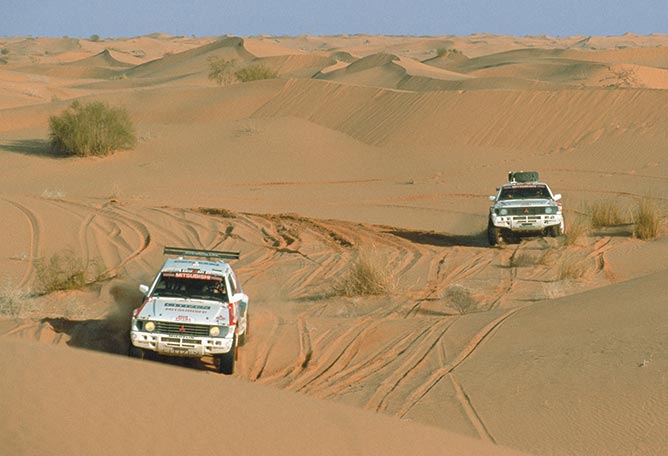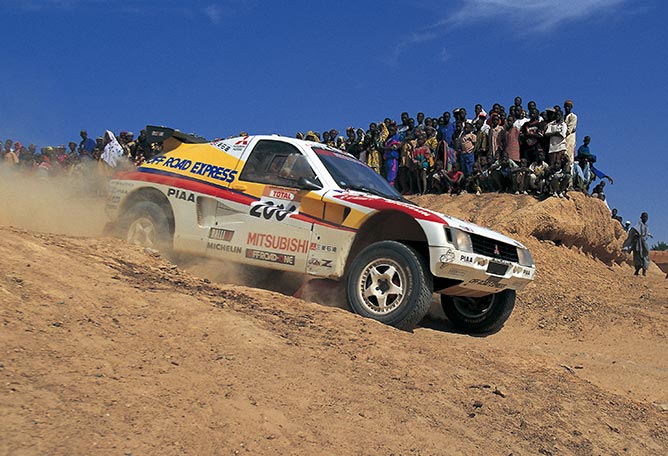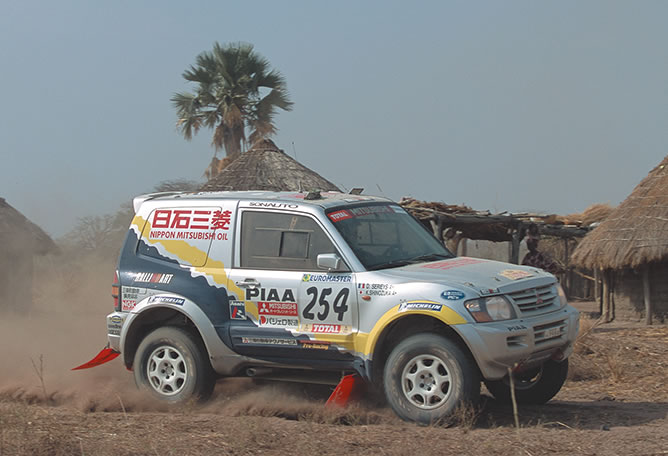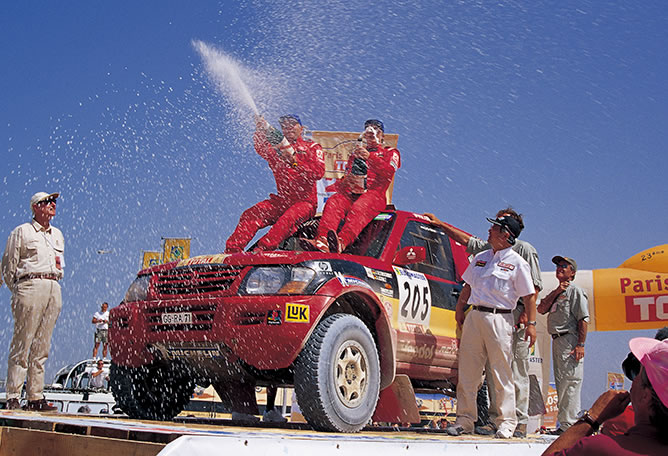The Dakar Rally has the reputation to be the ‘world's toughest motor race’, and it was the brainchild of French adventurer Thierry Sabine. Although the vast desert stage was its most emblematic feature, stunning natural landscapes of Africa in mountainous and dense forest areas were also part of the program. “I will show you the door to adventure. Only you can open it. I can take you along if you wish", Sabine once said. In the early days, racers competed for almost two weeks and covered an astonishing distance of 10,000 kilometers starting in Paris and finishing in Dakar, the capital of Senegal, in central Africa.
MITSUBISHI MOTORS first got involved in 1983, and claimed their first victory at their third attempt in 1985. The PAJERO/MONTERO entered the Dakar Rally 26 times and won a total of 12 victories with an unprecedented seven consecutive wins to become known to all motorsports fans around the world as the “King of the Desert”.
1983
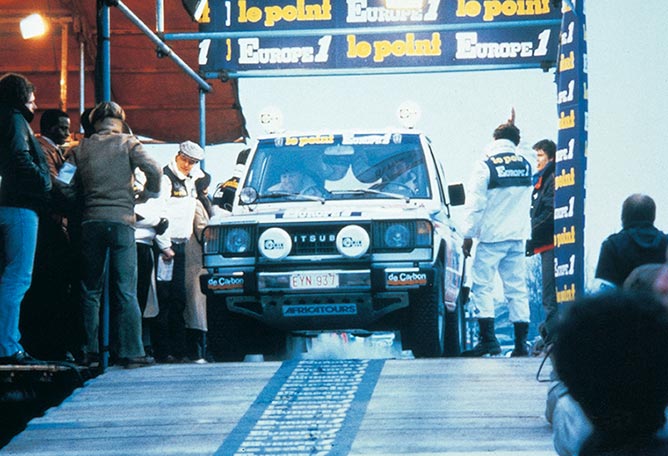
The MITSUBISHI PAJERO/MONTERO clinches its first victory in the non-modified production car class
1984
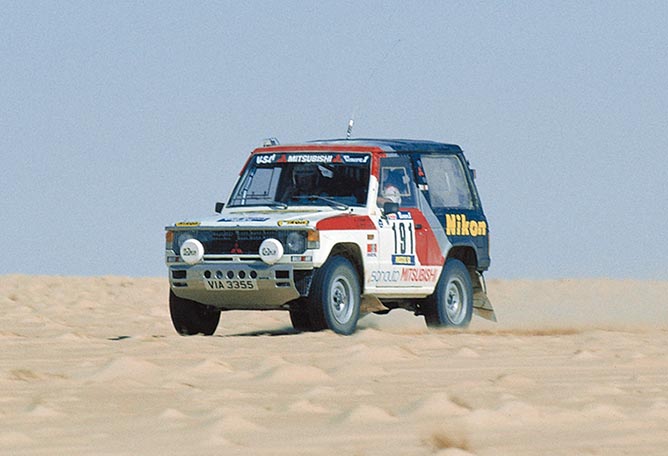
With the prototypes dominating the top rankings, the MITSUBISHI PAJERO/MONTERO finished 1st in the modified production car class and 3rd overall.
1985
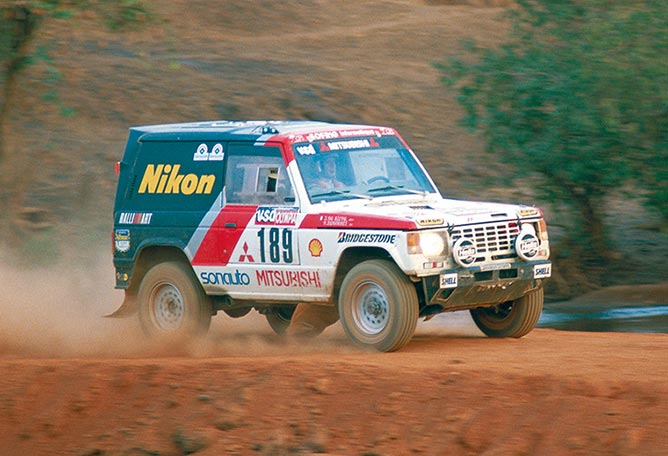
MITSUBISHI PAJERO/MONTERO takes first overall win. First triumph for a Japanese manufacturer
1986
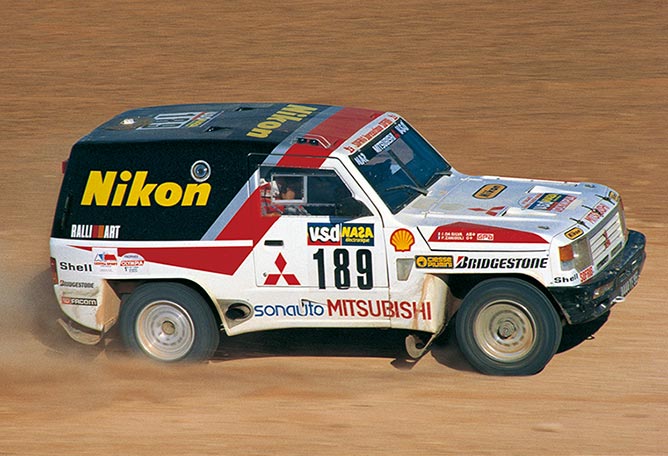
Paris-Dakar mourns tragic death of founder
All vehicles including the prototypes complete the rally
1987
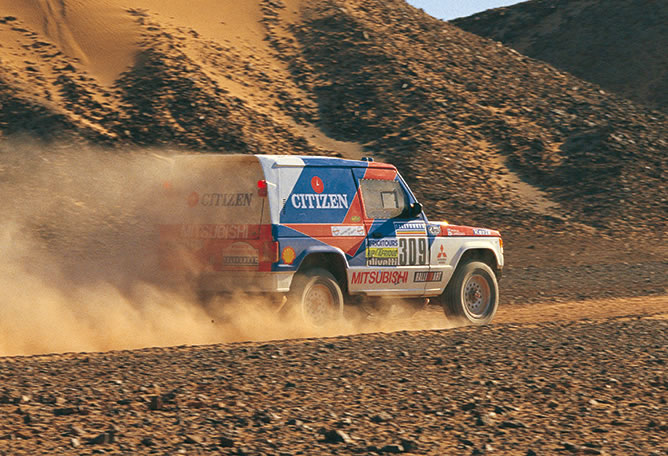
Beginning of a new era of the Paris-Dakar
Epic battle for victory between MITSUBISHI MOTORS and Peugeot
1988
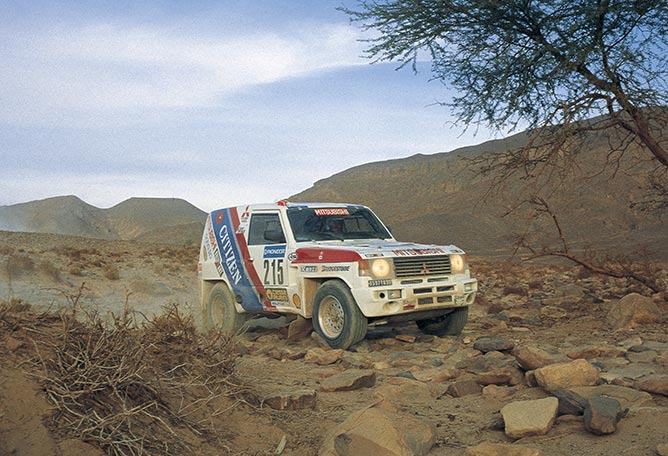
Paris-Dakar enters its 10th year
MITSUBISHI PAJERO/MONTERO and Kenjiro Shinozuka clinch 2nd place overall!
1989
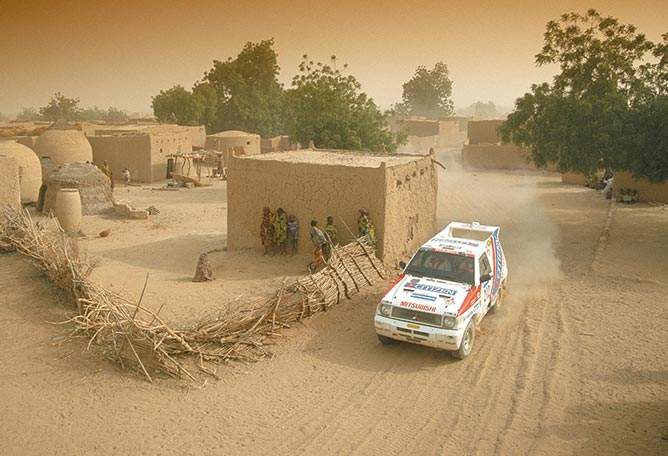
MITSUBISHI PAJERO/MONTERO takes 5 out of the top 10 positions
Demonstrating its high reliability
1990
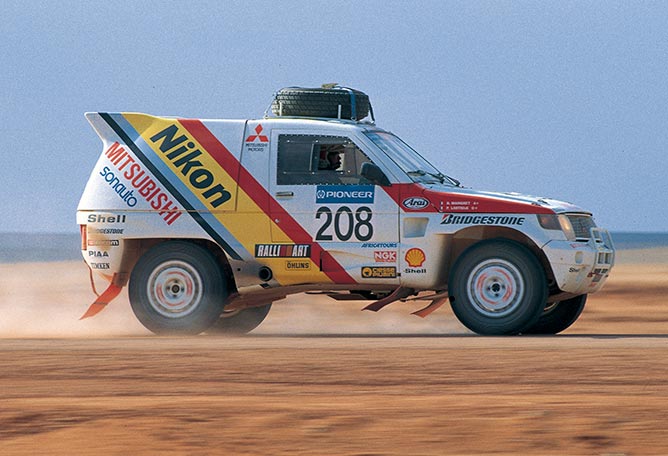
MITSUBISHI MOTORS takes on Peugeot in the final battle
Prototype Pajero greatly strengthened
1991
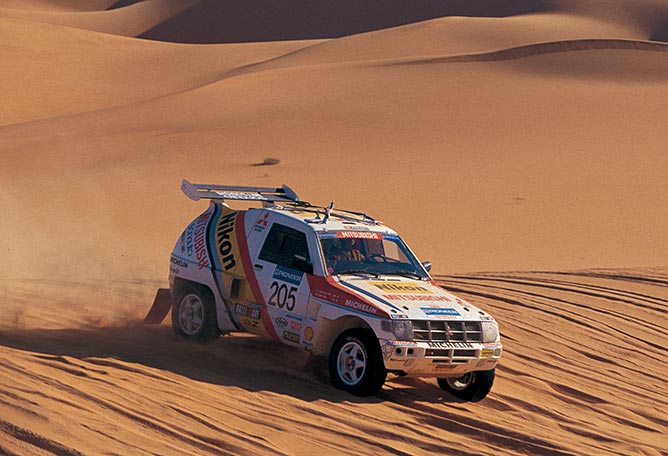
MITSUBISHI PAJERO/MONTERO evolves into a new prototype
MITSUBISHI MOTORS faces Citroën, beginning of a new battle
1992
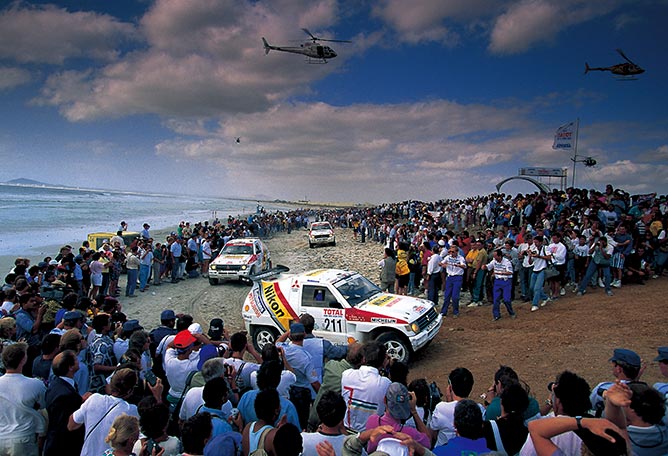
MITSUBISHI PAJERO/MONTERO takes victory with a second overall win
Outstanding 1-2-3 finish
1994
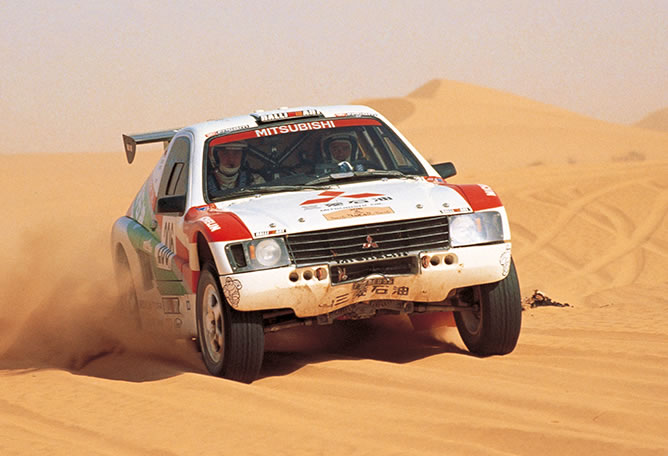
MITSUBISHI MOTORS’s courageous withdrawal
PAJERO/MONTERO evolves into the ultimate off-road machine
1995
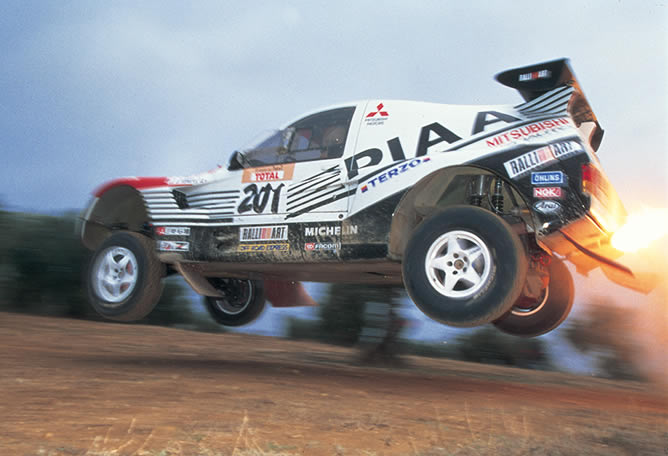
MITSUBISHI PAJERO/MONTERO demonstrates outstanding stability
The ultimate, constantly evolving off-road machine
1997
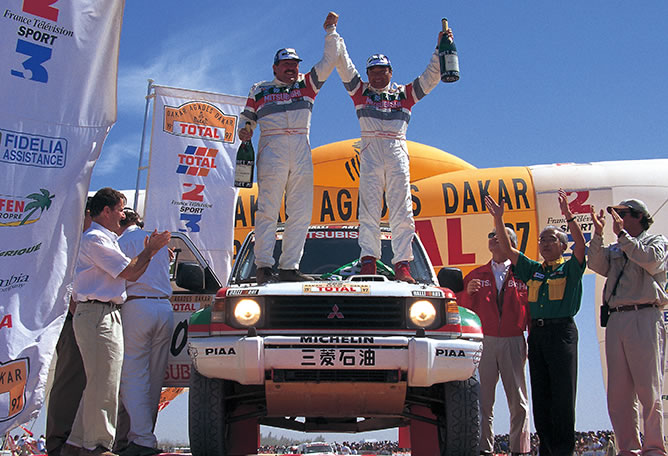
MITSUBISHI MOTORS dominates and seals the top four positions, a first in Dakar history
Kenjiro Shinozuka becomes the first Japanese to secure the overall win on Paris-Dakar
1998
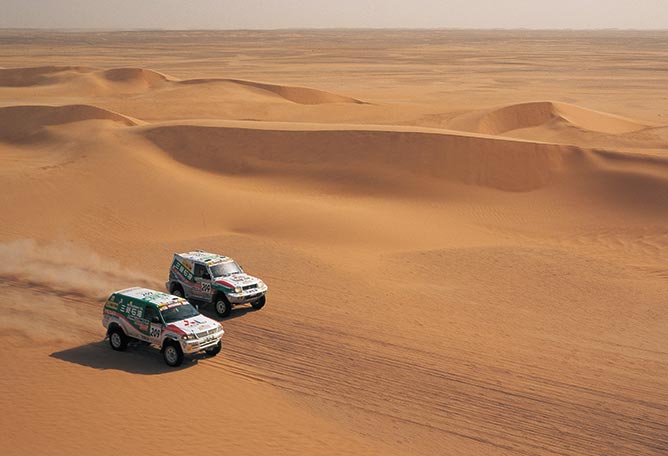
MITSUBISHI MOTORS dominates to claim the top four positions for the second consecutive year
The modified production car class PAJERO/MONTERO evolves into the Evolution model
1999
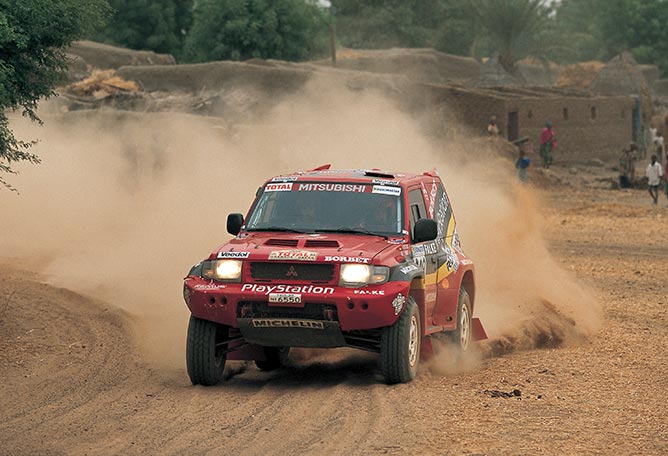
Paris-Dakar begins to see change
MITSUBISHI MOTORS brings forth a new heroine
2002
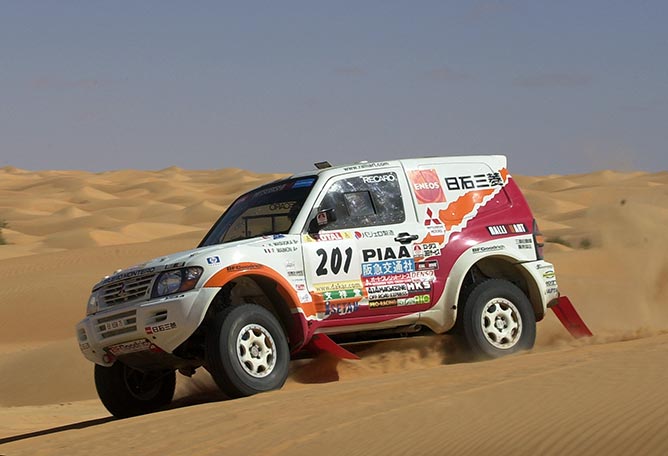
Hiroshi Masuoka wins the Dakar, overcoming the humiliating setback on the previous event
2003
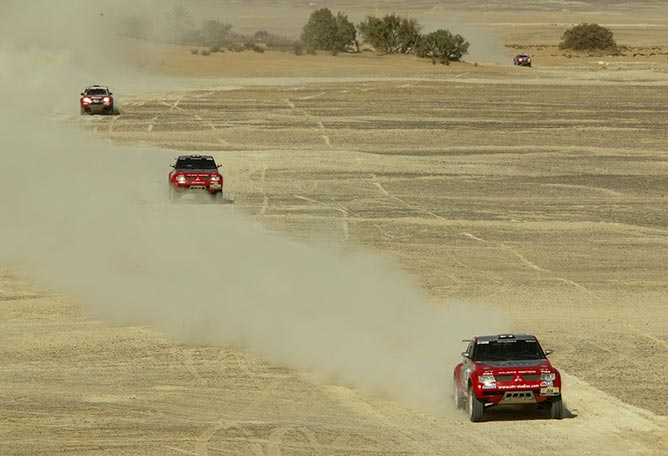
Hiroshi Masuoka, first Japanese driver to claim two consecutive victories
MITSUBISHI MOTORS dominates with 1st to 4th positions
2004
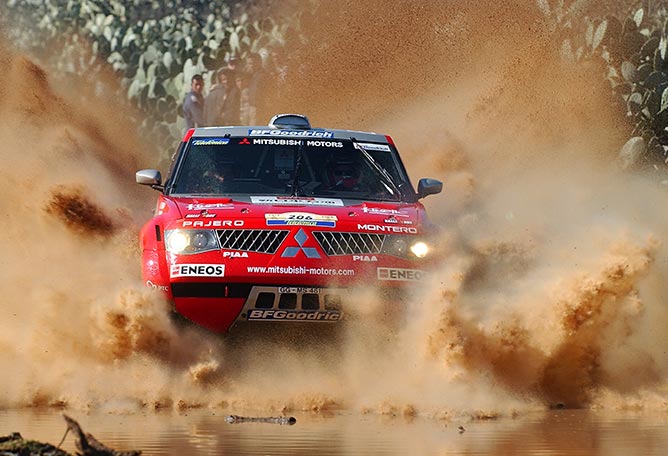
MITSUBISHI MOTORS Team wins for the ninth time, taking a fourth consecutive overall victory
2005
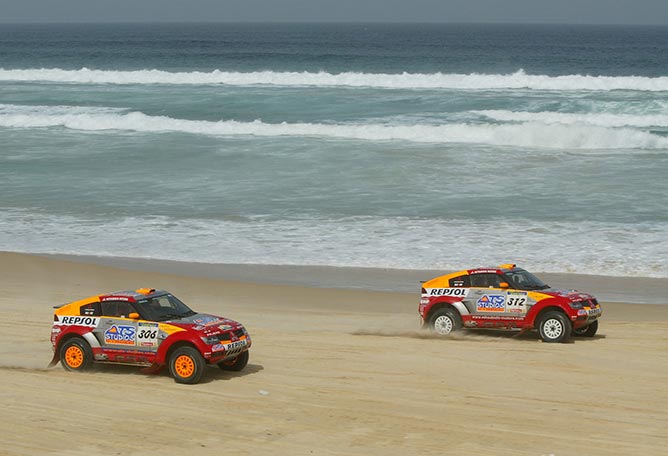
Peterhansel and Alphand pocket 1-2 finish, Peterhansel securing his second win in a row
2006
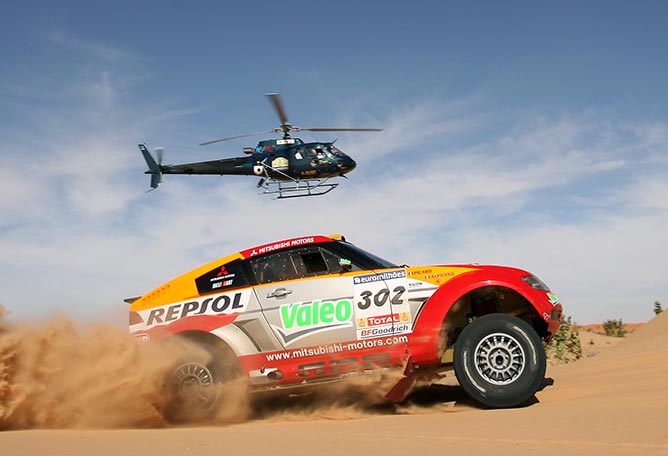
MITSUBISHI MOTORS and Volkswagen go head-to-head
MITSUBISHI MOTORS extends consecutive wins record to 6, claiming its 11th overall victory
2007
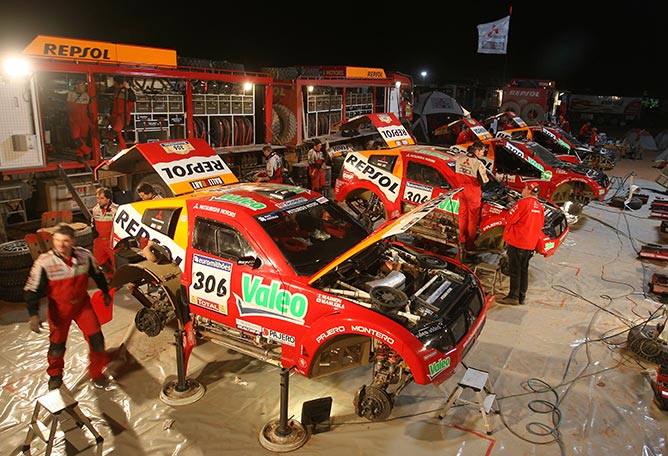
PAJERO/MONTERO EVOLUTION Super Production moves ahead
7 consecutive wins, 12 overall victories
2008
Event
Cancelled
2009
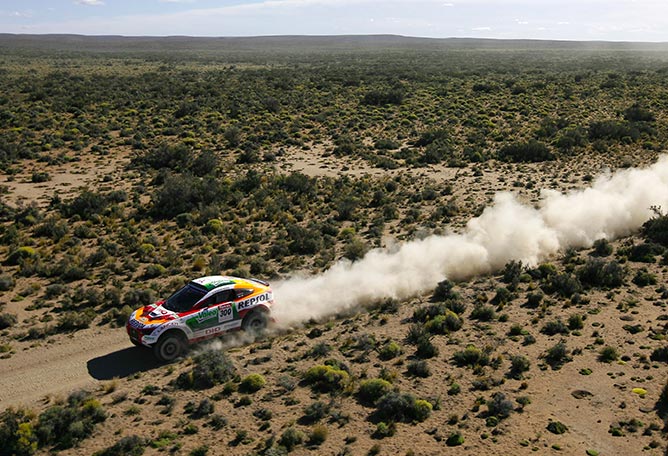
Dakar Rally holds inaugural event in South America
MITSUBISHI MOTORS Team’s participation in the Dakar Rally comes to a close
